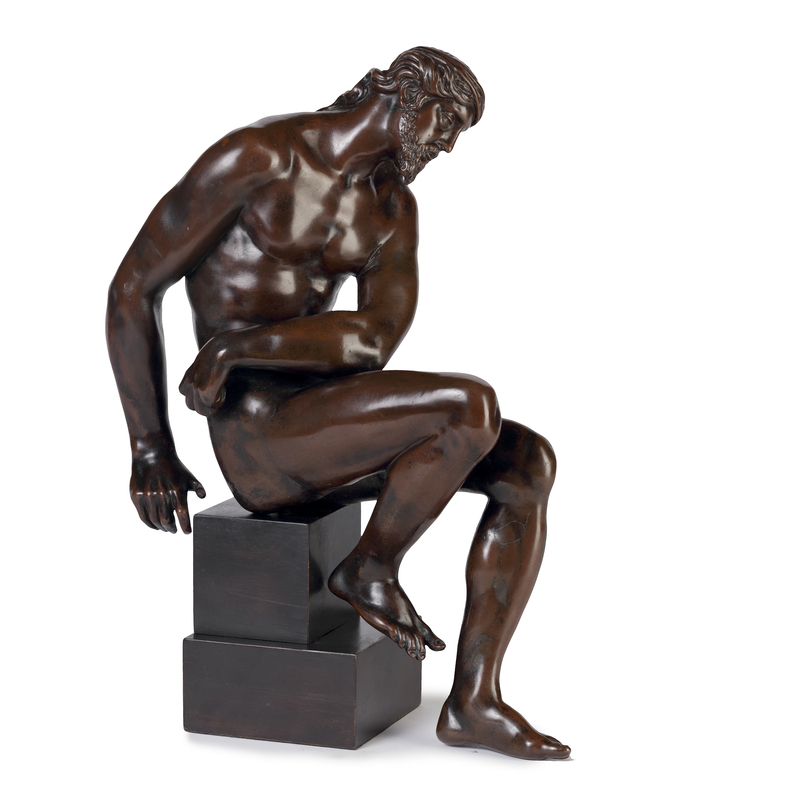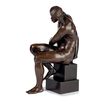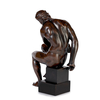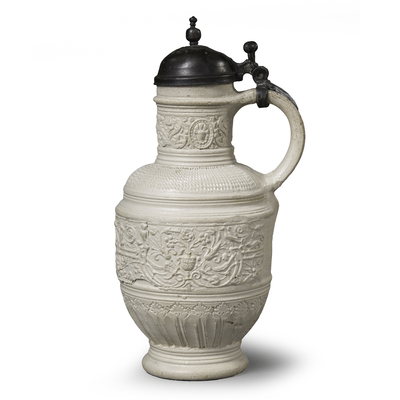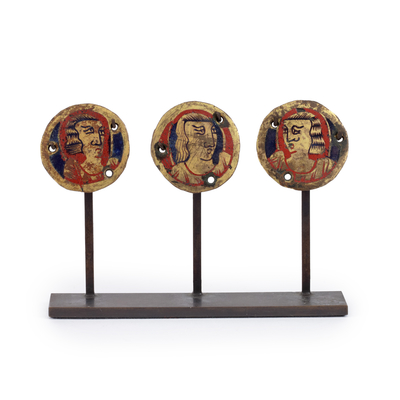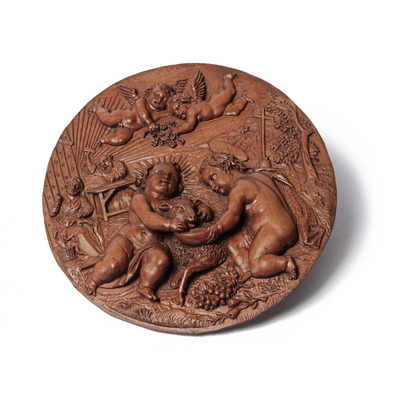Christ on the Cold Stone, attributed to Caspar Gras / Hubert Gerhard
Global shipping available
- Origin
- Probably Innsbrück, attributed to Caspar Gras (1585 - 1674) / Hubert Gerhard (1540 - 1620)
- Period
- First half 17th century
- Material
- bronze, ebony
- Height
- 37 cm
- Literature
J.L. Bassett, P. Fogelman, D.A. Scott & R.C. Schmidtling, The Craftsman Revealed: Adriane de Vries, Sculptor in Bronze, Los Angeles 2008, pp. 230 - 237.
- Provenance
Professor Michael Jaffé CBE (1923-1997), Cambridge, United Kingdom;
Thence by family descent;
On loan to the Fitzwilliam Museum, University of Cambridge, Cambridge, UK (1976 - 2016)
Questions about this object?
Please use one of the contact options below:
Description
This extraordinary sculpture portrays Christ on the cold stone. He is seated in a contemplative pose, resting his left arm on his knee and looking down. Around his head, he is wearing a band, a stylised reference to the crown of thorns. 'Christ on the Cold Stone' is a theme from the Passion that does not appear in the Bible but originates from late medieval Passion-treatises. It refers to the moment after the bearing of the cross and undressing when Christ sits down on a stone and pensively awaits Pilate's soldiers and the moment of his execution. It is one of the few representations of Christ in which it is acceptable to depict him naked.
The sculpture is made with the lost wax method and consists of five separately cast parts, which are skilfully connected with sleeve joints. Based on the composition of the bronze, the joints and the distinctive style, the sculpture can be attributed to Hubert Gerhard (1540 - 1620) or his pupil Caspar Gras (1585 - 1674). The strongly meandering hair on Christ's neck is reminiscent of the manes of Caspar Gras's 'Kicking Horse', collection J. Paul Getty Museum (inv. no. 85.SB.72), and the pure, zinc-based alloy and trace elements correspond to parts of the monument to Maximilian II (1618), modelled by Gerhard and Gras and cast by Heinrich Reinhard. The statue stands on a wooden, rectangular base.
In the collection of the LACMA (Los Angeles County Museum of Art) is a second, probably later, sculpture of Christ on the cold stone (inv. no. M.84.65.2). The two sculptures are strongly reminiscent of the 'Christ in Distress' by Adriaen de Vries, in The Princely Collections Liechtenstein (inv. no. SK515). This life-size sculpture depicts a suffering Christ on the cold stone, with folded hands. The torso of Christ is modelled on the antique, Hellenistic example of a resting Hercules figure. The heroic suffering of Hercules features as a prefiguration of the suffering of Christ, and in the sculpture, religious and secular iconography come together. In both the sculpture by De Vries and this work, it is not the faithful representation of the body that is of central importance, but the abstract movement and turning of the body.
Hubert Gerhard was a Dutch sculptor who became one of the most important sculptors of the late 16th century in Germany. He was probably apprenticed to the famous Flemish Mannerist sculptor Giambologna and worked for the ducal court in Munich. Gerhard's style shows the transition of the Renaissance to the Early Baroque. He left behind an extensive and large oeuvre, including a number of large fountains in Augsburg and Munich. The Austrian Caspar Gras was a pupil of Hubert Gerhard and was instrumental in the transmission of the Mannerist style inspired by Giambologna in Northern Europe. He worked as a sculptor for the Habsburg court in Innsbruck and created life-size sculptures, fountains and reliefs as well as small and refined Kunstkammer-pieces.
